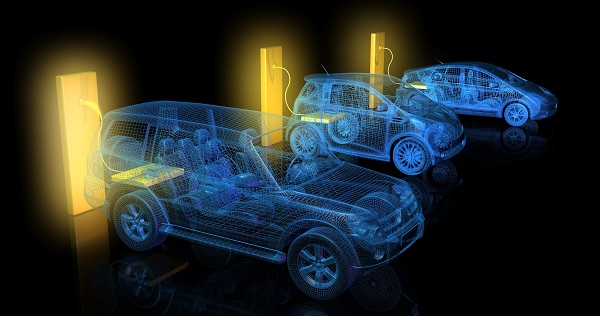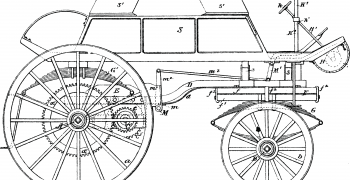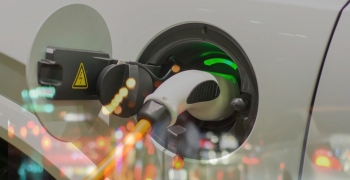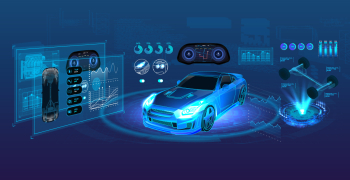Chequered History. Future Star.
Since their invention in the late 19th century, electric vehicles have gone through both high and low phases. Initially they were hailed as the more efficient alternative to the traditional motorcars with cumbersome internal combustion engines, but later, with huge advancements in the technology for ICE, and the mass production of motorcars made possible by Ford, EVs fell by the wayside. Interest in them as a serious contender for mobility solutions of the future was revived in the last decade almost singlehandedly by Tesla and its founder, the maverick innovator Elon Musk. EVs have made rapid progress ever since, and are now poised to bring about a revolution in the future of transportation.
Innovate or Perish
The automotive industry is currently witnessing many technology-driven trends that are shaping large-scale disruption in the area of transportation. Electrification is a key one among them and innovation is undoubtedly the centerpiece shaping the growth of the global EV market. An entire ecosystem of companies is now involved in developing affordable, clean and convenient electric mobility solutions for the planet. With policy-makers and governments across the world pledging their support to eco-friendly EVs in the face of acute concerns about climate change and the environmental damage caused by fossil fuels, the sector is set to expand exponentially in the coming years.
Critical Role of Governments
Incentives and subsidies by governments across the world have been a key factor propelling the growth in the last two decades. China, currently the world’s largest EV market, has mandated a quota for EV production for all auto manufacturers. It has also imposed restrictions on investments in new manufacturing plants of traditional, fuel-powered vehicles. Japan and South Korea too have significantly increased incentives for electric vehicles. Japan plans to reduce 80% of greenhouse gas emissions from vehicles by 2050 and South Korea, according to reports by the International Energy Agency, has extended its National Subsidies to 57,000 electrified vehicles in 2019, compared to 32,000 vehicles in 2018. India has joined the bandwagon too, with the Government announcing a slew of tax rebates to customers of EVs and to manufacturers of EV components, in its 2019 budget.
In countries of the EU like Norway, Germany, France and Sweden, which have the highest sales volumes of EVs in Europe, governments have helped strengthen their market and accelerated adoption through both fiscal and non-fiscal incentives. This translates into EVs being given free parking space in cities like Frankfurt, for example. Elsewhere, there are zones where only eco-friendly vehicles, like EVs, are allowed. On the fiscal side, the government in Norway, for example, removed import taxes on electric vehicles. They also cut taxes on their purchase and lease. The combination of fiscal and non-fiscal incentives has led to a quick growth of the EV ecosystem in these countries. In the US, states like California have been at the forefront of introducing measures to support EVs, including introducing stringent emission norms for vehicles and providing fiscal incentives for hybrid as well as battery electric vehicles.
Turbocharging the Technology
Trillion-dollar questions still need to be answered…especially around performance and pricing for an average consumer! Let’s examine some of the key factors at play here.
Charging made easy and more convenient will go a long way in helping increase the adoption of the EV. “Range anxiety” needs to be addressed. The term refers to the fact that most EVs today have a range of 150 to 175 km on a single charge, leading to a sense of constraint and anxiety – stemming from a fear of being stranded while on a drive - among owners. Though it has improved, charging infrastructure in many parts of the world is still not where it needs to be in order to accelerate the rate of adoption. Governments across countries need to drive the building of adequate, connected charging infrastructure much more proactively. Utility companies, infrastructure providers and governments have to work together in Public-Private-Partnership (PPP) models to make large networks of charging stations available to the general public, if they want to crank up the adoption of EVs. While governments do their bit in this respect, the development of new, groundbreaking EV technologies is set to make this segment more appealing to consumers. Among the ones that are currently in the development phase, wireless charging is a frontrunner. Wireless charging could play a big role in eliminating the range anxiety phenomenon mentioned earlier. Through this solution, electric vehicles could not only charge batteries with the help of a cable charger but wirelessly as well, using magnetic resonance based on oscillating magnetic fields.
This would mean that EVs could be charged on-the-go, as they were being driven, without having to stop to recharge, which normally takes several hours, or worry about running out of charge soon. Overcoming this limitation with a charge-as-you-drive system would undoubtedly make the EV a more attractive choice for consumers.
Batteries are the other key and critical area of innovation. Lithium-ion batteries are the ones commonly used today in EVs. They are not yet adequately available and their costs tend to be high due to the insufficient supply of the raw materials. Combined with shelf lives of three to 10 years on an average, based on make and model, they pull down the performance and the attractiveness of EVs as a desirable alternative mode of transport.
Many new technologies are currently being developed to find efficient alternatives to the Li-ion battery. Solid-state batteries are one such alternative being explored. They appear to have several advantages over the conventional ones used today, for example an extended lifetime, greatly reduced possibilities of electrolyte leaks and the ability to operate in more flexible temperature ranges.
The Smart, Sustainable Mobility Solution
The advantages of EVs have started to far outweigh the disadvantages and this trend will only accelerate in the future. Initial costs of EVs may be higher than that of gasoline-powered cars, but in the long run, they cost their owners far less as they consume no fuel and are cheaper to maintain. This is possible because a battery-powered electric vehicle has fewer components than a conventional fuel-guzzling car, making servicing and maintenance much more economical.
At this critical juncture, it is important for all the stakeholders committed to building a viable EV ecosystem to work collaboratively on spreading public awareness about the desirability of the EV as the best mobility solution for the future. The need is to dispel preconceived notions and ignorance about the viability of electric vehicles and build a devoted base of believers.
In a carbon-conscious world battling environmental pollution and the impending crises brought about by climate change, the benefits of electric vehicles for the environment cannot be overemphasized. Not just in the personal vehicle segment, the adoption of the EV in public transport systems can significantly reduce carbon emissions, thereby slowing down global warming and the catastrophic effects of climate change. As the world increasingly moves away from the production of electricity through carbon-rich sources like coal towards cleaner, renewable energy sources like solar and wind, this dividend will grow further.
To make the future of transportation electric, the need of the hour is considerable and ongoing investment in research and development by the auto industry, visionary policy-making by governments, together with creating strong legislation and incentivizing customer adoption. Smart solution-building by all stakeholders is the key to shaping this future and bringing about real change with a long-lasting, deep impact.
I hope your next vehicle is an EV….!




